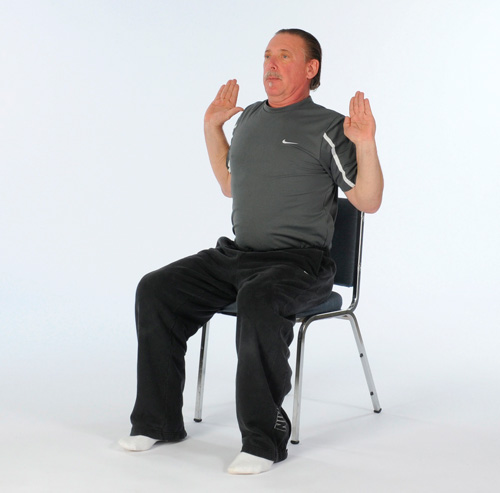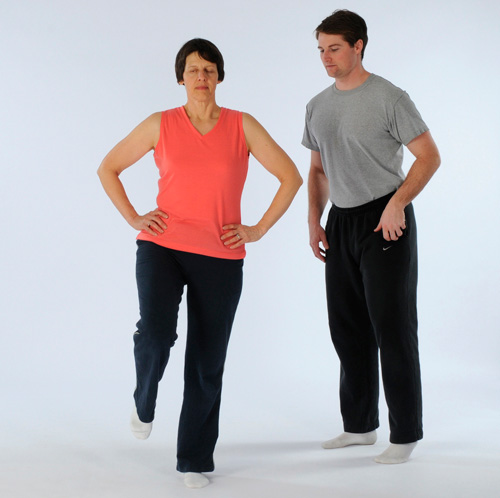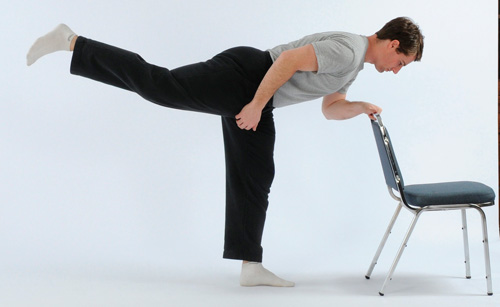We have all known someone whose balance is less than ideal. The person could be a customer or loved one that needs your professional help. Difficulties with balance can stem from injury, joint replacements or a slip and fall. Balance impairment could be long-term in nature and associated with a disease such as Parkinson's, or short-term caused by an injury that needs to heal. Whatever the cause, balance can be improved, albeit on a different level for each person.
Having been a health care professional for many years in New Jersey, I have seen the demands and expectations placed upon home care providers. My role as an exercise physiologist filled the void when a patient was discharged from a physician or therapist and needed that professional bridge to the home environment. My guidance normally began with a review of their rehabilitative protocols from the therapist, then implementing the program on a regular basis to ensure compliance and progress.
There are many types of home health professionals that provide services and products to all segments of the population. The common thread is that a product and/or service is utilized to enhance the quality of life and functional status of the end user.
What is Balance?
Simply put, balance is the ability to maintain our position in space, otherwise known as equilibrium. Performing balance-centric exercises on a daily basis, even in small amounts, improves the body's ability to maintain a sense of equilibrium, thus preventing a fall or other balance-related accident. Balance training needs to be functional, meaning the benefits can be easily transferred to activities of daily living (known as ADLs). Exercises should combine elements of mobility and stability. Mobility is associated with flexibility and pain-free range of motion. Stability is thought of in terms of strength. Exercises that combine mobility and stability, coupled with a baseline sense of equilibrium, form the foundation of a great balance enhancement program.
No one thinks about balance until a trip or fall causes him or her to re-evaluate his or her level of independent movement. A fall can take away a person's self-confidence and ability to perform leisure activities and favorite hobbies, possibly resulting in long-term depression and related emotional issues if independence is not regained.
Functional Assessment: Assessing Your Balance
Health care professionals utilize assessments as a baseline to measure functional status and make the necessary recommendations for their patients. Exercise specialists are often included in this model of care and in a pre-/post-rehabilitative setting, preferably in the patient's home.
Force plates measure how the patient distributes his or her body mass, providing valuable information about the patient's equilibrium. Medically supervised screenings are beneficial for those with advanced medical conditions or chronic balance impediments because of the information clinicians can gather.
The following simple movement assessment requires no equipment or special apparatus. Have your patients complete the following balance assessments to see where they have difficulties:
- Standing calf raise: Screens balance and ankle flexibility.
- Stair walking, up and down a set of stairs, with and without holding a railing: Tests lower body strength and balance.
- Sitting to standing from a chair, with eyes open and with eyes closed: Screens ability to transfer weight from a sitting to standing position, and strength in the hips and legs is challenged during this assessment.
- Weight shifting, moving side to side, pause on one leg and shift to the opposite side: Assesses lateral weight transfer, similar to sitting and standing, yet through a different plane of movement. Core and hip control are challenged as well.
- Heel to toe walking, forward and backwards: Assesses balance and coordination by decreasing patient's base of support because the feet are closer together. Core muscles including those in the torso and lower back are recruited at an increased level.
Note: As the caregiver, always monitor your patient while administering any assessment in order to provide support, security and assistance if needed.
If your patient can complete the above assessments with little or no difficulty, great! A good sense of balance is indicative of strong core muscles, responsive reflexes, and the ability to perform activities of daily living with relative ease.
If your patient experiences difficulty with the assessments, work together on the exercises until improvement is seen.
Fitness Equipment: Common Tools of the Trade
The greatest tool any home health care professional can use is their mind. Fancy equipment will not make a difference unless applied in a consistent, systematic method with regular assessment along the way. Thus, the goal for the professional should not only be to get the client well, but also to teach them skills to facilitate a level of post-care independent maintenance. The following are common tools that you may or may not currently use.
Foam rollers are commonly seen in most therapeutic and fitness centers. The rollers come in a variety of models including soft to dense, or long and travel size. They are generally used as a method to release trigger points or tight points in muscle tissue. A less well-known benefit is that rollers can re-hydrate tissue by bringing fluid to dry, restricted tissue, such as the IT band on the outside of your hip. You can easily find examples of foam roller use on the Internet.
Therabands are great training tools. They are portable, easy to transport and have multi-functional capabilities. Generally speaking, darker colored bands represent greater resistance while lighter colored bands offer less resistance. The body can perform all kinds of movements with bands including pulling, pushing, pressing, rotating, and extending. Multiple joints and muscles are worked without having to change weight plates or seat positions as when working with machines. Once again, you can find examples of band exercises online.
Conclusion
Home health care professionals know the body is dynamic and is constantly processing information from the surroundings to maintain equilibrium and balance. Factors such as muscle strength, health history, medications and fatigue impact the body's ability to activate reflexes, thereby preventing falls.
The good news is that balance can be improved with daily exercise and proper guidance, and instruction in short bouts designed to improve stability and mobility. For those lacking adequate balance, their quality of life can be negatively affected due to the lack of independence that comes with the freedom of pain-free movement. By leading patients in the exercises in this article, my hope is they will see improvement over time in their daily functions.
A Better Balance Routine: 3 Simple Exercises
There are many different opinions from health experts on best approaches to balance training. No one opinion is wrong or right, yet there is a general logic that fitness experts follow. If a patient cannot perform a standard squat without pain, why ask the patient to perform such an exercise on an unstable surface such as a balance ball? Furthermore, is a squat on a balance ball truly functional if the patient spends the majority of his or her time on stable surfaces? These are questions you should ask as they pertain to what is in the patient's best interest for improving and maintaining balance.
With that said, here are three exercises that I have seen provide great benefit to numerous clients over the years. Exercise 1: Alphabet Ws

Setup: Sit upright on a sturdy surface. Squeeze the shoulder blades black and down. Draw the elbows down and back into the middle spine. Hold, then release.
Feel it here: Middle back
Benefit: Strengthens the posture muscles that keep the body upright during static positions—such as standing—and dynamic positions—such as walking. These muscles work collaboratively with the shoulders and hips to assist in balance and breathing. Strengthening these muscles results in decreased incidence of chronic musculoskeletal conditions including back pain.
Exercise 2: Weight Shifting

Setup: Spot your patient as he or she performs this exercise. Begin in a normal standing position. As the patient walks forward, spot from the left to the right leg, as the patient balances momentarily on each leg. The patient should feel the hips and legs working to stabilize his or her body during the momentary pause phase.
Feel it here: Hips and legs
Benefit: During movements such as walking and stair climbing, two common daily activities, weight shifting is a crucial part of maintaining balance. Distributing weight back and forth between the left and right sides occurs hundreds of times per day.
Exercise 3: Single Leg Deadlift

Setup: Have your patient draw one leg straight back while keeping his or her hips square. Perform the deadlift while keeping the leg off the floor. Use a wall or chair for assistance in balancing.
Feel it here: Glutes, hamstrings
Benefit: This exercise accomplishes two primary objectives: it strengthens the back of the lower body and also teaches hip hinging. The latter benefit trains the body to hinge at the hips, not the lower back. There are many different opinions from health experts on best approaches to balance training. No one opinion is wrong or right, yet there is a general logic that fitness experts follow. If a patient cannot perform a standard squat without pain, why ask the patient to perform such an exercise on an unstable surface such as a balance ball? Furthermore, is a squat on a balance ball truly functional if the patient spends the majority of his or her time on stable surfaces? These are questions you should ask as they pertain to what is in the patient's best interest for improving and maintaining balance.
With that said, here are three exercises that I have seen provide great benefit to numerous clients over the years.
Physical Factors Affect Balance
Many physical factors affect balance, and some are more obvious than others. A less obvious factor in balance is hydration. The adult human body is, on average, 60 percent water. The level of proper hydration generally recommended for healthy individuals is half their body weight in ounces per day. For example, a person weighing 200 pounds should drink 100 ounces of water each day. A properly hydrated body has enhanced tissue suppleness and pliability, leading to ease of mobility and stability during movement. Home health providers should ensure their patients are properly hydrated throughout the day.
In Exercises for Better Balance, I provided a checklist of important factors care providers should consider:
- Lack of physical activity: Are patients getting daily movement?
- Medications: Have patients started new medications and experienced any side effects? Symptoms can decrease reflexes and response time.
- Impaired vision
- Dehydration
- Inner ear problems
- Insufficient sleep
- Surgical procedures
- Disease
